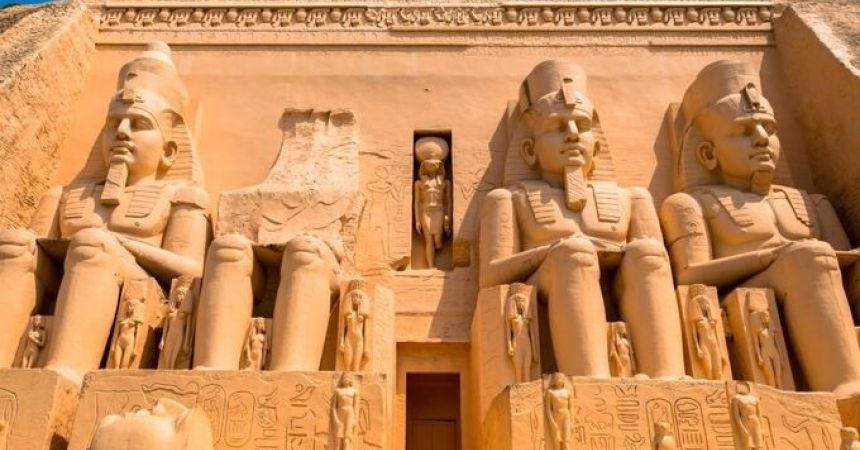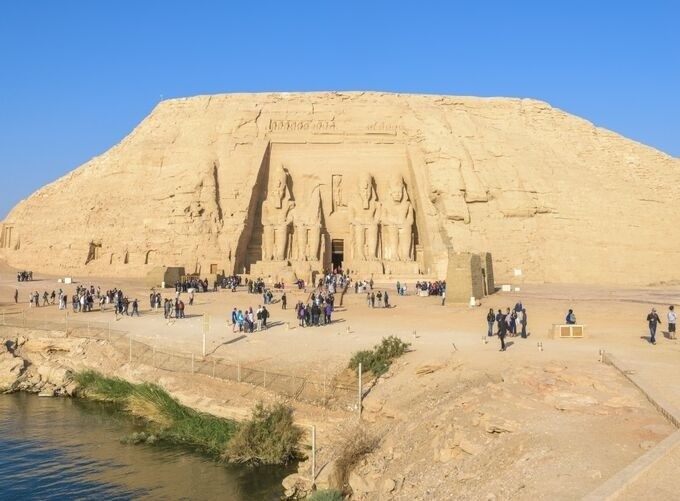
Explore Egypt’s Vibrant Cities – Best Destinations
Egypt, a country steeped in history, culture, and diversity, is home to some of the most vibrant and fascinating cities in the world. Among these, Cairo, Luxor, and Alexandria stand out for their unique characteristics, rich histories, and abundant attractions. Each city offers visitors a glimpse into the country’s ancient past, modern life, and cultural treasures. In this comprehensive guide, we will explore the highlights of each city, providing insights into what to see, where to go, and how to make the most of your visit.
Cairo: The Bustling Capital
Cairo, the sprawling capital of Egypt, is one of the largest cities in Africa and the Middle East. With a population of over 20 million, it is a vibrant metropolis that blends the ancient and modern worlds. Cairo is not only the political and cultural center of Egypt but also a city rich in history and traditions.
Historical Significance
- Ancient Roots: Cairo is home to the world-famous Giza Pyramids, located just outside the city, and the Sphinx. These ancient wonders have drawn travelers for centuries and symbolize Egypt’s rich historical heritage.
- Islamic Heritage: The city is often referred to as "The City of a Thousand Minarets" due to its vast number of mosques, reflecting its significance as a center of Islamic culture and learning.
Key Attractions
The Pyramids of Giza
- Overview: The Giza Plateau, home to the Great Pyramid of Khufu, the Pyramid of Khafre, and the Pyramid of Menkaure, is a must-visit for anyone in Cairo.
- Visiting Tips: Plan your visit early in the morning to avoid crowds and the heat. Consider hiring a guide to enrich your experience with historical context.
The Egyptian Museum
- Overview: Located in Tahrir Square, the Egyptian Museum houses an extensive collection of ancient artifacts, including the treasures of Tutankhamun.
- Must-See Exhibits: Don’t miss the Royal Mummy Room, where you can see the preserved remains of some of Egypt’s most famous pharaohs.
- Visiting Tips: Allocate several hours to explore the museum, as the collection is vast. Guided tours can provide valuable insights into the exhibits.
Islamic Cairo
- Overview: This historic district is home to stunning mosques, bustling bazaars, and vibrant street life.
- Key Sites: Visit the Citadel of Saladin, which offers panoramic views of the city, and the Mosque of Muhammad Ali, known for its impressive architecture. Explore the Khan el-Khalili bazaar, where you can shop for souvenirs, spices, and traditional crafts.
Coptic Cairo
- Overview: Coptic Cairo is one of the oldest parts of the city, home to several ancient churches and a rich Christian heritage.
- Key Sites: Visit the Hanging Church, built on top of a Roman fortress, and the Coptic Museum, which showcases the history of Christianity in Egypt.
Food and Dining
Cairo’s culinary scene is diverse and vibrant, offering everything from street food to fine dining. Don’t miss trying traditional Egyptian dishes such as koshari, ful medames, and freshly baked pita bread. Local eateries and street vendors offer a chance to experience authentic flavors.
Practical Tips for Visiting Cairo
- Transportation: Use the metro for efficient travel around the city. Taxis and ride-sharing services like Uber are also available.
- Safety: While Cairo is generally safe for tourists, it's advisable to stay vigilant and avoid isolated areas at night.
- Best Time to Visit: The cooler months from October to April are the best time to visit, with pleasant temperatures for exploring the city.
Luxor: The Ancient Capital of Thebes
Luxor, often referred to as the world’s greatest open-air museum, is located along the banks of the Nile River and is home to some of the most significant archaeological sites in Egypt. Once the capital of ancient Thebes, Luxor is a treasure trove of temples, tombs, and monuments that showcase the grandeur of ancient Egyptian civilization.
Historical Significance
- Thebes: Luxor was the religious and political capital of ancient Egypt during the New Kingdom (1550–1070 BC), known for its wealth and influence.
- Temples and Tombs: The city is surrounded by some of the most important temples and tombs, including the Valley of the Kings and the Temple of Karnak.
Key Attractions
Karnak Temple
- Overview: Karnak is one of the largest temple complexes in the world, dedicated primarily to the god Amun-Ra. The site features impressive pylons, colossal statues, and the stunning Hypostyle Hall with its 134 massive columns.
- Visiting Tips: Allocate at least half a day to Trip to Karnak, and consider visiting early in the morning or late in the afternoon to avoid the heat and crowds.
Valley of the Kings
- Overview: The Valley of the Kings is a royal burial site where many pharaohs were laid to rest. The tombs are renowned for their intricate wall paintings and elaborate burial practices.
- Notable Tombs: Don’t miss the tomb of Tutankhamun, discovered in 1922 by Howard Carter, and the tombs of Ramses II and Seti I.
- Visiting Tips: Entry fees apply for each tomb, so plan ahead and choose which ones to visit. Early morning is the best time to beat the heat and crowds.
Temple of Hatshepsut
- Overview: This mortuary temple, dedicated to the female pharaoh Hatshepsut, is built against a backdrop of cliffs and features three impressive terraces adorned with beautiful reliefs.
- Historical Significance: The temple reflects Hatshepsut’s achievements and her unique role as a female ruler in ancient Egypt.
- Visiting Tips: Allow time to explore the temple and enjoy the surrounding gardens and views.

Luxor Temple
- Overview: Situated in the heart of Luxor, the Temple of Luxor was built by Amenhotep III and later added to by Ramses II. The temple is beautifully illuminated at night, creating a magical atmosphere.
- Visiting Tips: Visit in the evening to witness the temple’s stunning illumination, enhancing its beauty and providing a different perspective.
Cultural Experiences
Luxor offers various cultural experiences, including traditional felucca rides on the Nile, hot air ballooning over the valley, and visits to local markets. Engage with local artisans, explore the vibrant culture, and sample traditional Egyptian cuisine.
Practical Tips for Visiting Luxor
- Transportation: Taxis and horse-drawn carriages are available for getting around Luxor. Consider hiring a guide for comprehensive tours of the archaeological sites.
- Safety: Luxor is generally safe for tourists, but it’s advisable to stay cautious and follow local customs.
- Best Time to Visit: Like Cairo, the cooler months from October to April are the best time to explore Luxor, avoiding the scorching summer heat.
Alexandria: The Mediterranean Gem
Alexandria, founded by Alexander the Great in 331 BC, is Egypt’s second-largest city and a vibrant cultural hub on the Mediterranean coast. Known for its rich history, stunning architecture, and beautiful waterfront, Alexandria offers a unique blend of ancient and modern experiences.
Historical Significance
- Cultural Center: Alexandria was once the center of learning and culture in the ancient world, home to the famous Library of Alexandria and the Great Lighthouse, one of the Seven Wonders of the Ancient World.
- Roman Influence: The city boasts a mix of Greek, Roman, and Egyptian influences, reflected in its architecture and archaeological sites.
Key Attractions
The Catacombs of Kom El Shoqafa
- Overview: These catacombs date back to the 2nd century AD and are a fascinating blend of Greek and Egyptian architectural styles. The site features intricate carvings and burial chambers.
- Historical Significance: The catacombs are a testament to the syncretism of cultures in Alexandria and provide insight into ancient burial practices.
- Visiting Tips: Be prepared for narrow passageways and steps. Guided tours can enhance your understanding of the site’s history.
The Bibliotheca Alexandrina
- Overview: A modern tribute to the ancient Library of Alexandria, the Bibliotheca Alexandrina is a stunning architectural marvel housing millions of books and cultural artifacts.
- Cultural Activities: The library hosts exhibitions, lectures, and cultural events, making it a vibrant center for knowledge and learning.
- Visiting Tips: Take time to explore the various exhibitions and galleries, and don’t miss the panoramic views of the Mediterranean from the rooftop.
Qaitbay Citadel
- Overview: Built on the site of the ancient Lighthouse of Alexandria, the Qaitbay Citadel is a 15th-century fortress that offers stunning views of the Mediterranean Sea.
- Historical Significance: The citadel is a reminder of Alexandria’s strategic importance throughout history and features impressive defensive architecture.
- Visiting Tips: Explore the grounds, enjoy the sea views, and take time to learn about the citadel’s history.
Montaza Palace and Gardens
- Overview: Montaza Palace, built in the 19th century, is surrounded by beautiful gardens and offers a serene escape from the bustling city.
- Scenic Views: The gardens are perfect for a leisurely stroll, and the coastal views add to the charm of this picturesque location.
- Visiting Tips: Bring a picnic to enjoy in the gardens, and consider visiting early in the morning or late in the afternoon for a more pleasant experience.
Culinary Experiences
Alexandria is famous for its seafood and Mediterranean cuisine. Don’t miss trying local dishes such as grilled fish, seafood platters, and the city’s famous falafel. Explore local restaurants and cafes to sample authentic flavors.
Practical Tips for Visiting Alexandria
- Transportation: Tour to Alexandria has a reliable public transport system, including buses and trams. Taxis and ride-sharing services are also available.
- Safety: Alexandria is generally safe for tourists, but it’s wise to stay vigilant and respect local customs.
- Best Time to Visit: The best time to visit is from October to April when the weather is cooler and more pleasant for outdoor activities.
Unforgettable Egypt Holiday: Explore Ancient Wonders
Egypt’s vibrant cities of Cairo, Luxor, and Alexandria offer a rich tapestry of history, culture, and experiences for travelers. From the majestic Pyramids of Giza to the serene gardens of Montaza Palace, each city presents its unique charm and attractions.



